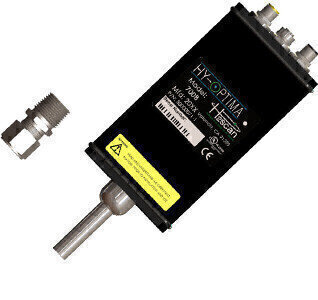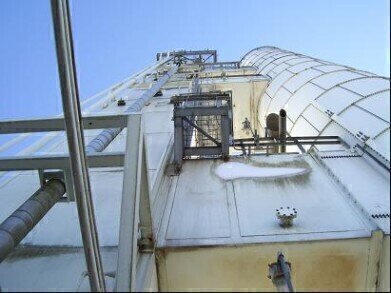-
 HY-OPTIMA 700B Series Process Hydrogen Analyzer
HY-OPTIMA 700B Series Process Hydrogen Analyzer -
 Ground View of Air Separation (ASU) & Argon side of Cold box
Ground View of Air Separation (ASU) & Argon side of Cold box
Gas Detection
Air Separation Units (ASU) APP NOTE featuring the HY-OPTIMA 740B Series Process Hydrogen Analyzer
Sep 15 2016
Application
Hydrogen detection in the Argon side of an air separation unit (ASU) within a cold box
Background
The process of air separation involves the intake of huge volumes of air from the atmosphere. Throughout the process the air is separated into its elemental components in the form of liquid oxygen, argon and nitrogen.
There are two sides to a cold box, the ASU side and the Argon production side; as Argon is manufactured commercially by means of air separation technology. Hydrogen is used in the process of Argon production to maximize the quantities produced.
In the cryogenic process, atmospheric air is compressed and cooled. Following liquefaction, the air is fractionally distilled based on the different boiling points of each component.
During distillation, liquid nitrogen is the first product extracted from the high-pressure column. Next, a stream containing Oxygen and Argon (plus other gases) is withdrawn. The crude stream, containing approximately 10 percent Argon, is refined in a separate distillation column to produce pure Argon.
Manufacturers refine the stream by adding a controlled quantity of Hydrogen to mix with the Argon, catalytically burning the trace Oxygen to water, drying and finally distilling the stream to remove remaining Hydrogen and Nitrogen. After reaction of Oxygen and Hydrogen, the hot Argon is cooled and the water vapor resulting from the H2 – O2 reaction is removed, usually in a dual bed adsorber drier system. The deoxo system can be complex and involves the cost of supplying Hydrogen. This process enables the production of 99.9995% pure argon.
Advantages
It is important to monitor the hydrogen to ensure efficiency of the system and for safety, as hydrogen is subject to leak out of the piping and collect within the cold box. The HY-OPTIMA™ Model 740 can be readily used for this application since it enables in-line, continual hydrogen measurement in the intern Argon backgrounds. Traditional combustible sensors cannot be used since they require the presence of oxygen for operation.
H2scan offers sampling systems within a weatherproof enclosure for this application. The sample is extracted from key points within the cold box to a central location where the hydrogen content is continuously analyzed by the analyzer.
Customers with air separation plants include Air Liquide, Praxair, Air Products, Linde Gas, and any other gas producers.
- You can view the complete APP NOTE details here.
- You can view the HY-OPTIMA 740B Series Data Sheet here.
- You can view the HY-OPTIMA 740B Series Manual by clicking here.
- You can view the HY-OPTIMA 740B Series webpage by clicking here.
For further information or inquiries, please contact:
- Gid Herman (661) 775-9575 ext. 606
- Russell Gruener (661) 775-9575 ext. 625
Digital Edition
IET 34.2 March 2024
April 2024
Gas Detection - Biogas batch fermentation system for laboratory use with automatic gas analysis in real time Water/Wastewater - Upcycling sensors for sustainable nature management - Prist...
View all digital editions
Events
Apr 30 2024 Melbourne, Australia
Apr 30 2024 Birmingham, UK
May 03 2024 Seoul, South Korea
May 05 2024 Seville, Spain
May 06 2024 Minneapolis, MN, USA

















